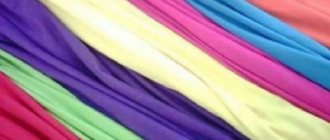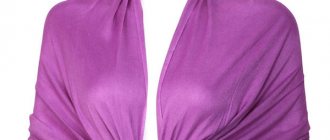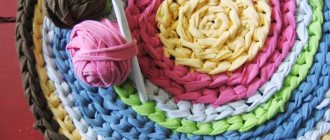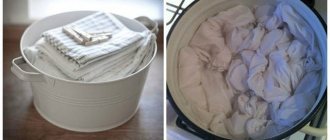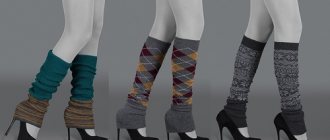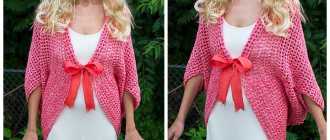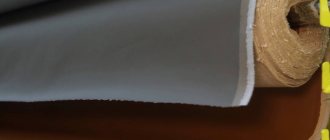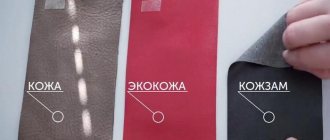The history of human use of natural fibers goes back more than ten thousand years. The first artificial materials were obtained in the century before last, and synthetics came into wide use a little more than half a century ago. Since then, almost every year new synthetic fabrics and new names for them appear on sale, textile technologies are constantly being improved, and the properties of materials are improving.
History of man-made materials
The first raw materials that people used to produce textiles and household items were the well-known flax, hemp, cotton, wool, and silk. These natural materials have survived many historical eras and are widely used today. The idea that a person can create artificial fibers from other substances was expressed by French encyclopedists, but they were put into practice only in 1890. The reason for this was research carried out at the gunpowder plant in Besançon (France), as a result of which, over time, the production of threads from hydrated cellulose and viscose was established. On their basis, the first artificial fabrics were created, primarily the popular staple, which is in great demand today, as well as acetate, cupra, lyocell, modal .
A new step in the development of the textile industry was the synthesis of fiber-forming polymers, the raw materials for which were natural carbon compounds, primarily oil, coal and gas. The modern list of synthetic materials is very extensive, and historically, the names of the same fabric can be different in different countries. Based on their composition and structure, the following types of polymers are distinguished:
- polyamide,
- polyester,
- acrylic,
- polyvinyl chloride and polyvinyl alcohol,
- polypropylene (polyoliphene),
- polyurethane.
New classes of third-generation polymer fibers include polyamides and polyethylenes with high molecular weight, polybenzoxazole, polybenzimidazole, as well as glass and ceramic threads, nanofilled and nanosized fibers. So far, the production of such innovative polymer materials is limited, and their scope is limited to various fields of technology and medicine, but it is possible that synthetic fabrics based on them, as well as new artificial materials, will soon appear.
The benefits of synthetic fabrics
The dangers of synthetic underwear are widely known, but at the same time, artificial materials have numerous valuable properties:
- Clothing made from high-quality fabrics obtained by processing petroleum products has almost the same properties as natural ones. Many synthetic items are highly breathable and allow the body to breathe, are pleasantly soft and do not irritate the skin.
- Unlike natural ones, artificial materials do not shrink or lose shape after washing. They practically do not wrinkle and do not require frequent ironing.
- Synthetic clothing comes in a wide variety of colors. Artificial fabrics are easy to dye and allow you to apply interesting patterns to things.
- Synthetic material is highly durable - it is difficult to tear, it wears little on the folds.
- Clothes made from artificial materials are easy to wash from dirt. It dries quickly and is usually not afraid of fading in the sun. Synthetic materials rarely suffer from mold, they are not eaten by moths, and they do not accumulate bacteria.
Recommended reading: How to lighten jeans evenly at home
The big advantage of artificial fabrics is their low cost, especially in comparison with natural ones.
Polyamide fibers (nylon, perlon, nylon)
Historically, the first successful synthesis of polymer filaments were polyamide fibers produced in 1938 by the DuPont concern. The synthetic fabrics produced from them are known under a variety of names: nylon, perlon, nylon, etc. Modern improved materials of this group include Jordan, Taslan, Velsoft.
The main advantage of polyamides is their high tensile and abrasion strength; moreover, they do not wrinkle, do not absorb water and can serve as a protective waterproof layer.
Unfortunately, the list of their negative properties is quite long, it includes:
- rigidity;
- lack of hygroscopicity;
- accumulation of static electricity;
- instability to high temperatures and UV radiation.
Polyacrylonitrile fibers
Due to similar properties, these fibers are often called artificial wool. An undoubted plus is that yarn with the addition of polyacrylonitrile fibers is much lighter than ordinary wool, which allows you to create warm and light things. The product does not fade in light, withstands high temperatures and is characterized by relatively good strength.
Polyacrylonitrile fibers
Trade names
: nitron, acrylic, acrylan, cashmilon, etc.
For what clothes?
Polyacrylonitrile fibers are often mixed with wool in sweaters, cardigans and turtlenecks to prevent the product from being too heavy. Mittens, socks and warm tights are knitted from pure acrylic.
Practical polyesters
Polyester fiber, first synthesized in 1941, is used to create fabrics such as terylene, dacron, lavsan, tergal, etc. Among the modern modifications of this textile are the widespread polyester, microfiber, raincoat fabric and other popular fabrics. Features of fabric made from fibers of this group are:
- high strength;
- they are softer, lighter and more flexible than polyamide materials;
- protect well from unfavorable external environments.
Unfortunately, the hygienic properties of polyesters are still significantly inferior to natural materials; they become electrified and deformed when exposed to high temperatures, do not retain heat well and have a “greenhouse effect.” However, all types of polyester products are inexpensive, they are very practical, and the addition of such fibers to natural fabric makes it more durable and less expensive.
How to choose the right synthetic clothing
Synthetic clothing can be a good purchase if you choose it carefully. When buying items made from artificial fabric, you need to look not only at color, style and size. Other important nuances need to be taken into account:
- Information on the label. If clothes are to be worn directly on the body, you need to ensure that the minimum volume of natural fibers in its composition is at the level of 70%. The share of pure synthetics should not exceed 30%, otherwise the item will be uncomfortable and even harmful to health.
- Appearance of clothing. Before purchasing, you need to carefully inspect the item for defects - check the quality of the seams, analyze how evenly and reliably the paint is applied, and whether there are any protruding threads or other defects.
- Smell. If synthetics have a distinct chemical aroma, you should avoid purchasing them. An unpleasant odor indicates the presence of toxic substances in the material, and it will not be possible to get rid of them by washing.
- Seasonality. It is recommended to buy synthetic items for wearing in autumn or spring. In summer, it is better to give preference to natural materials that wick away moisture well and allow air to pass through.
- Manufacturer. Even when purchasing synthetics, it is recommended to choose clothes from well-known and reputable brands. It will cost a little more, but the quality of the artificial material will be high.
Recommended reading: How to remove tea from white clothes
In general, it is recommended to choose synthetics if you need to replenish your wardrobe with shirts, T-shirts, blouses and dresses. In this case, the material will not harm the skin and will not provoke allergies. High-quality synthetics are indispensable when playing sports, provided that they are removed from the body immediately after training and immediately sent to the wash.
But it is better to buy socks, underwear and pajamas from natural materials. Such wardrobe items are in constant and direct contact with the body and must be of the highest quality.
Advice! You can buy completely synthetic items if we are talking about outerwear that does not come into direct contact with the skin.
Warm and soft acrylic
The raw material for producing acrylic is natural gas. Such types of fabrics as nitron, orlon, PAN, etc. are made from durable and fluffy acrylic fibers. Unlike most synthetic materials, acrylic retains heat well and is low allergenic, which is why it is often used as an additive to wool or yarn for knitwear . Acrylic is resistant to many aggressive materials, including alkalis and acids, soft to the touch and durable.
At the same time, acrylic fibers:
- over time they form pellets,
- not hygroscopic;
- easily absorb fats, forming difficult-to-remove stains;
- become electrified;
- deteriorate their properties under the influence of UV radiation.
Popular synthetic fabrics
Nowadays, many varieties of synthetics are used - if desired, you can count several dozen, or even hundreds of names. But only a few of them are known to the general public.
We recommend: How to learn to fold things correctly, neatly and compactly?
Nylon
In fact, nylon was a “pioneer” in the market of synthetic fabrics - it was invented by the Americans almost 100 years ago. Unlike other, even the most expensive and natural materials, it could:
- protect from the wind;
- do not allow water to pass through the thickness of the fibers;
- remain durable for a long time;
- withstand significant tensile and tensile loads (nylon is 50 times stronger than viscose).
Thanks to these qualities, nylon began to be used to make clothes and equipment for the army, athletes and other people forced to spend a lot of time in extreme weather conditions.
Interesting fact: the US flag, which was planted by the first astronauts on the moon, was sewn from nylon.
Polyester
Cheap and very popular material all over the world. It is used as a substitute for cotton, although it is inferior to cotton fabric in terms of hygroscopicity and breathability. However, there are varieties of polyester that are difficult to distinguish from natural fabric even for professionals - often it is only revealed by the sheen of the threads, which is uncharacteristic of cotton.
Polyester does not shrink, does not fade, and does not fade when exposed to sunlight. It is easy to sew blouses, dresses, and bed linen from it. It also has an interesting property: if you give the fabric a certain shape under the influence of high temperature (for example, make a pleat), it will remain intact even after washing.
Elastane
It is not used in its pure form. But in combination with other synthetic fabrics it is found everywhere. Swimsuits and corsets, bras, panties, hosiery, elastic medical bandages, leggings, tight dresses - this is an incomplete list of things that simply would not exist without elastane.
However, this material has one significant drawback: it is afraid of contact with chlorine and chlorine-containing substances. Clothes containing elastane over time acquire a yellow tint if washed in chlorinated water; in addition, the fabric deteriorates and begins to “crumble” and “crumble.”
We recommend: How to easily clean rabbit fur at home?
Acrylic
Soft, very pleasant to the touch material, its properties reminiscent of wool. It is often mixed with viscose and cotton to create even better quality fabric or yarn. Acrylic is 100% hypoallergenic, so products made from it can be worn even by people who are contraindicated in natural fur and wool.
Acrylic does not wrinkle, does not fade, does not enter into chemical reactions with most substances found in everyday life, and is not affected in any way by rain and snow. In addition to suits and outerwear, home textiles are produced from acrylic.
Lightweight and hydrophobic polypropylene
Among all synthetic fibers, polypropylene is considered the lightest. Polypropylene threads are traditionally used as an additive to natural raw materials, but its main advantage has been revealed relatively recently. The hydrophobicity of this substance, which contributed to its widespread use as raincoat fabric and water-repellent coating, has found wide application in the manufacture of thermal underwear.
Thanks to the loose structure of polypropylene fabric, moisture and water vapor quickly penetrate from the surface of the skin to the outer layer, while the fabric itself remains completely dry.
Unfortunately, this fabric is also not without its drawbacks - it quickly forms pills, can cause irritation if worn constantly, and easily absorbs odors.
Polyurethane – elasticity and water protection
The main feature of polyurethane threads is their elasticity - they can be stretched to a value eight times greater than the original one. Due to this feature, they are used as a base for elastomers, covering the outside with viscose or polyester. The list of such elastic materials is long, which includes spandex, elastane, lycra, supplex. Materials for technical and medical purposes are also made from it. The second direction of using polyurethane is to create a water-repellent layer (PU - fabric).
